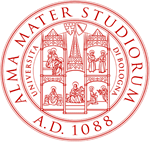successful admissions
of students enter the university of their choice
students consult Education Index when applying for universites
successful admissions
of students enter the university of their choice
students consult Education Index when applying for universites
The origins of the University of Bologna go way back, and it is considered to be the oldest university in the Western world. Its history is intertwined with that of the great names of science and literature, it is a keystone and a point of reference for European culture.
Bologna University has been student-centred whilst attracting prominent figures from science and the arts. Today it is a leader in the European Higher Education Area and famous for its beauty and integration with the city. Its teaching catalogue is diversified and tailored to the needs of present-day society: over 200 degree programmes among its 33 Departments, 11 Schools and over 81,000 students.
Bologna has always favoured a multi-disciplinary, cross-cultural approach; it invests in international, multicultural training, research and services. It has formed knowledge alliances with industry and public/private organizations, and is a hub of international networks. Of its international and joint-degree programmes, 27 are taught in English. Besides the five campuses (Bologna, Cesena, Forlì, Ravenna, Rimini), there is an overseas branch (Buenos Aires) coordinating research, post-graduate training and academic liaison with Latin America. Beyond its close European links Bologna enjoys multiple international connections, with North America, Africa, Asia and Australia.
The establishment that we call University today began to evolve in Bologna in the late 11th century, when masters of grammar, rhetoric and logic began to devote themselves to law.
The fame of the Studium spread throughout Europe and many English scholars also came to study in Bologna. Perhaps the most famous of these was Thomas Becket. But in the following centuries Bologna was visited by other illustrious scholars and students:Pico della Mirandola and Leon Battista Alberti, who studied canonical law, and in 1506 Erasmus of Rotterdam, a student of almost forty, came to study here for a year.
In the same period, Nicolaus Copernicus, a member of the Germanic nation, was completing his three years of study in Bologna. While studying pontifical law, he began his astronomical observations and, in his work "De revolutionibus orbium coelestium" remembers one particular observation in Bologna on the night of 9 March 1497. And again, Paracelso, Abrecht Dürer, San Carlo Borromeo, Torquato Tasso, Carlo Goldoni.
Legend has it that a woman taught in Bologna between the 12th and 13th centuries, Bettisia Gozzadini. It is said that, attracting huge crowds, her lessons were held not in the classroom but in the public squares.
In 2014, the Italian newspaper La Repubblica, in collaboration with CENSIS, has awarded the University of Bologna the first place in its academic ranking of Italian universities for the fifth time in a row.

The University of Bologna has a Multicampus structure, ensuring the opportunity to learn and promoting stable research activities throughout the region, aiming to improve the operations and quality of life for the university community.